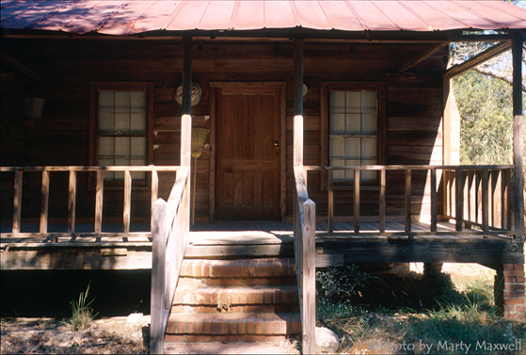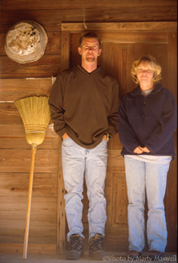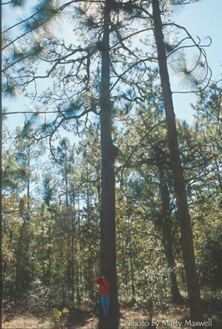| page last updated |
 |
River Tour | Estuary | Salt Marsh | |
| What is an Estuary? > Climate > Geology > Surface Water > Ground Water > Aquatic Habitat > Upland Habitat > Ecological Processes > Animals and Plants > Socioeconomic Values > Human Impacts and Pollution > Where does Your water come from? > Management Issues > Protecting YOUR Watershed | ||
|
K-12
Students Site
|
||
| Habitat > Aquatic > Upland > Riparian Zones > Plants and Animals | ||||||||||||||
|
A Protected
Area of Land The Moody Forest Natural Area is a 3400-acre (13.7 square kilometers or 5.3 square miles) protected area of land along the banks of the Altamaha River. The area located in Appling County (see map). Half of the Moody area (1700 acres) is wetland habitat, including prominent cypress swamps. The remaining half of the area (1700 acres) is dry upland habitat. Riparian habitat, bottomland hardwood forest, and long-leaf pine forest occur in the upland habitat. The Nature Conservancy of Georgia, with federal support, recently purchased the property from the Moody family in order for it to be preserved in its natural state. Now this land is protected from business and homeowner development, and from private timber companies cutting down trees. The public is welcome, however, to visit the area and walk among its natural beauty. Obtaining the Moody Forest Natural Area was a priority for The Nature Conservancy. They are working to preserve the entire Altamaha River ecosystem by establishing the Altamaha River Bioreserve. |
||||||||||||||
 |
||||||||||||||
|
A History
of Caring for the Land The Moody Forest Natural Area is a special place because it is one of last large areas of habitat along the Altamaha River undisturbed by development or timber cutting. Very little human impact has affected this area because of the stewardship (caring for the land) of the former owners, the Moody family. |
||||||||||||||
 |
||||||||||||||
| Ms. Elizabeth's cabin in the Moody Forest | ||||||||||||||
|
The Moody Forest Natural Area was purchased following the death of Miss Elizabeth Moody, the last property owner. Generations of Moody family members have lived on the land. Miss Elizabeth and her brothers, Causs and Wade, lived in a small log cabin built by their Uncle Jake in 1876. Although their land was worth millions of dollars, they chose to live their lives simply and quietly, enjoying the beauty of their woods. Until the 1990's, there was no electricity or running water in the cabin. The Moodys lived without lights, television, radio, telephone, or air-conditioning. An outhouse in the yard was their bathroom, and the kitchen was a small, separate building attached to the cabin by a walkway (kitchens were built this way in the 1800's because of danger of fire). The cabin was heated and lighted by a fireplace, and water for cooking and bathing came from an old well in the yard. This rare, historical home is now preserved, close to its original state. A Rare
Forest The Moody forest is one of the largest areas of long-leaf pine forest remaining in the country. In the 1700's, 90% of the southeastern United States was covered by long-leaf pine forest. Now, less than 3% of this forest remains. Long-leaf pine forest provides rare habitat for over 300 rare, threatened, and endangered plants and animals, including gopher tortoises, red-cockaded woodpeckers, and a dicerandra plant found nowhere else in the world. The cypress swamps on the Moody forest are magnificent. They are home to some of the largest (over 3 meters [10 feet] wide at the base) and oldest (over 600 years old) cypress trees in the south. Preserving
the Forest In order to preserve the long-leaf pine forest and improve overgrown areas, workers are managing the forest. Forest experts with The Nature Conservancy, Dr. Nate Thomas, a Land Steward, and Mr. Scott Saucier, a Preserve Manager, plan and carry out forest restoration. The main methods they use to preserve the forest are tree replanting, tree thinning (removing small trees to enhance the survivorship of larger, older trees), and fire ecology. In order to preserve the area in its natural state, the forest managers must also protect the rare, native species and prevent non-native species from invading the forest. In order to accomplish these big tasks, the forest managers have asked the community to get involved. Dr. Thomas has put up notices along the river to alert people using the river and those living nearby to be on the lookout out for non-native, problem plants. Dr. Thomas is also working with a local company, International Paper, to preserve a rare, local plant species, Radford's dicerandra. This small shrub doesn't grow anywhere else in the world except along the Altamaha River! |
 |
|||||||||||||
 |
||||||||||||||
| long leaf pine trees | ||||||||||||||
 |
||||||||||||||
| a cone from a long leaf pine tree | ||||||||||||||